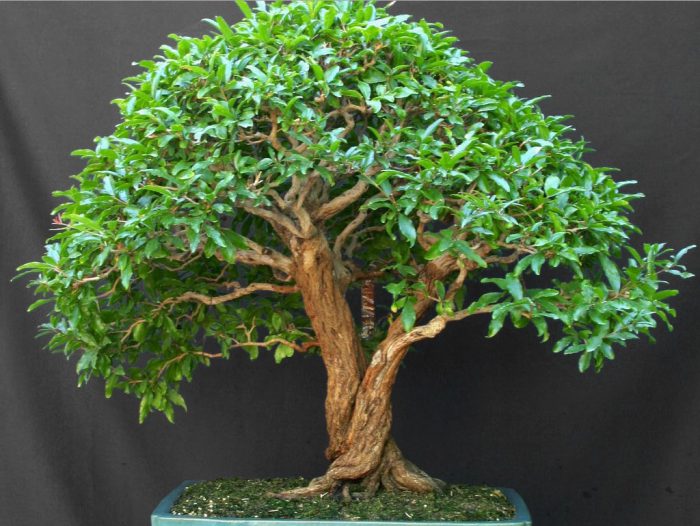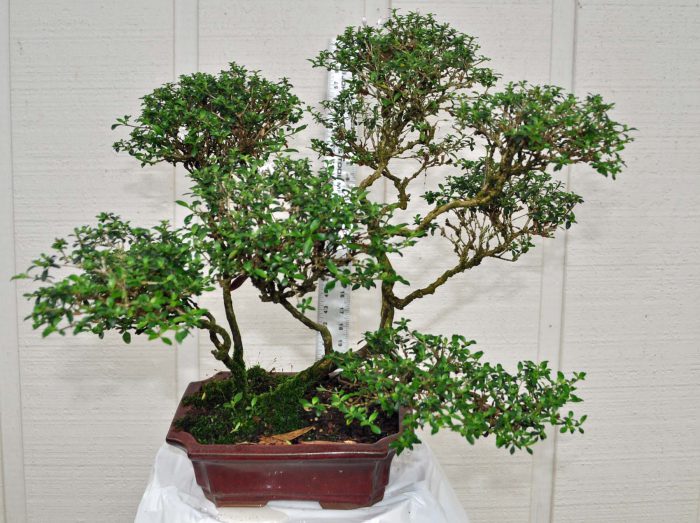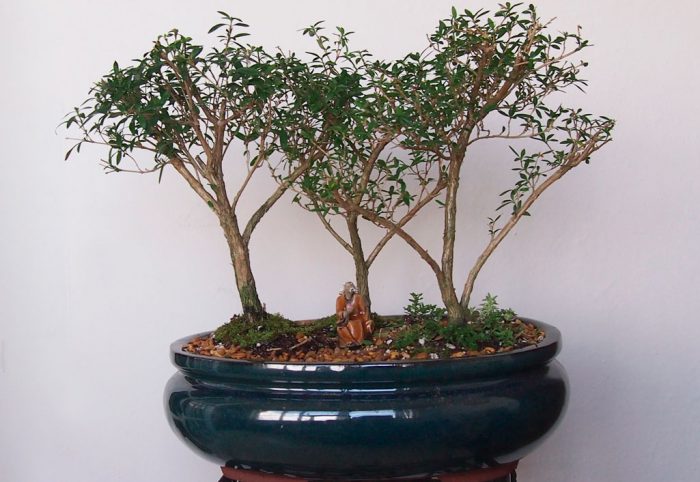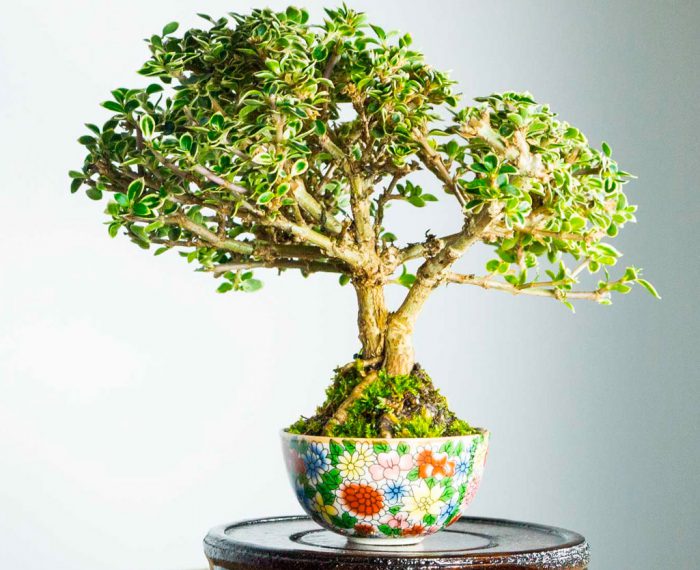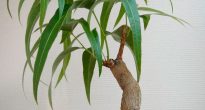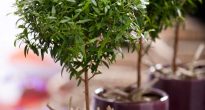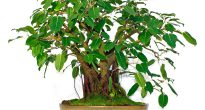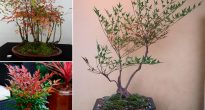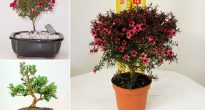A plant like serissa (Serissa) is a compact evergreen shrub that can grow no more than 60 centimeters in height. Its trunk is strongly curved, and small leaves have an oblong or elliptical shape. The white-gray bark exfoliates in rather thin strips.
His small flowers are painted in pink or white. They are located in the leaf sinuses. Flowering is very long from late spring to early autumn. Serissa is also called "the tree of a thousand stars", and that's all because during flowering it is strewn with small flowers resembling stars in shape. But why is this plant considered a tree? The fact is that its grayish bark, as well as a relatively powerful trunk protruding from the soil, outwardly resemble an adult tree only of a very small size.
The native land of this plant is tropical Asia. A young plant is most often acquired because of very beautiful flowers. But it is worth considering that the serissa is very capricious and demanding in care. A beginner is unlikely to cope with such a difficult task, even a florist with extensive experience behind him, sometimes it is beyond his power. An interesting fact is that after you touch the bark of this tree, the room will be filled with a specific aroma.
Content
Serissa care at home
Illumination
It is necessary to choose a well-lit place with a sufficiently large amount of light, but at the same time it is worth considering that the direct rays of the sun should never fall on the foliage. Best suited for placement is a window with a western or eastern orientation. You should know that if the lighting is very intense, the leaves will turn yellow. If there is not enough light, then the serissa will not be able to grow and develop normally.
Temperature regime
In the warm season, this tree will feel great at an air temperature of 18 to 30 degrees. In winter, he needs a relative coolness of 14-15 degrees. Please note that the temperature should not drop below 12 degrees.
How to water
In the summer, watering should be abundant and should be done regularly once every 4 days. It should be borne in mind that between waterings, the upper one and a half centimeter layer of the substrate must necessarily dry out. Only soft water is used for irrigation. In winter, watering is reduced to moderate (no more than 1 time per week).For the plant, both overflow and overdrying of the soil are very harmful (especially in winter). If you are growing bonsai serissa, then it is recommended to water it through a pallet. After this kind of watering is done, you need to drain the water from the sump and wait until excess liquid drains through the drainage holes.
Air humidity
Quite a moisture-loving plant. Recommended humidity should be at least 50 percent. Experienced florists advise to spray foliage 2 times a day, and best of all in the morning and evening hours. Also, to increase the humidity, pebbles and a little water can be added to the pan. Make sure the bottom of the pot does not come into contact with the liquid.
Fertilizer
It is necessary to fertilize the plant in the spring-summer period once a month. For this, fertilizers are used exclusively in liquid form. It is best to choose organic fertilizers for feeding, but you can also use mineral fertilizers (1/2 of the recommended dose on the package). In winter, fertilizers cannot be applied to the soil.
Transplant features
The transplant is carried out once every 2 years in the spring. If necessary, during this procedure, you can trim the root system a little. The newly transplanted plant should be placed in a shaded area where it should spend some time.
Reproduction methods
As a rule, propagated by cuttings. For this, a semi-lignified apical cutting is cut, the length of which should be about 10 centimeters. There must be 3 nodes on it. For rooting, you will need a bottom-heated mini greenhouse filled with a mixture of perlite and peat. But before planting the cutting, the cut should be treated with heteroauxin. When the roots appear, the plant is transplanted into a separate container.
Pests and diseases
The insect, scale insect, spider mite or aphid can settle. When overflowing, in most cases the root system rots, as well as if heavy soil is used for cultivation.
Potential problems and care tips
- Flowering does not come - there is little light.
- Leaves turn yellow, rot and die off - due to excess moisture in the soil.
- The room in which the plant is located must be regularly ventilated.
- In springtime, it is recommended to cut off weak branches and pinch the tips of the shoots for better branching. Dried side branches are cut with scissors.
- If you cut off all the lower branches, then you can form a serissa in the form of a small tree.

